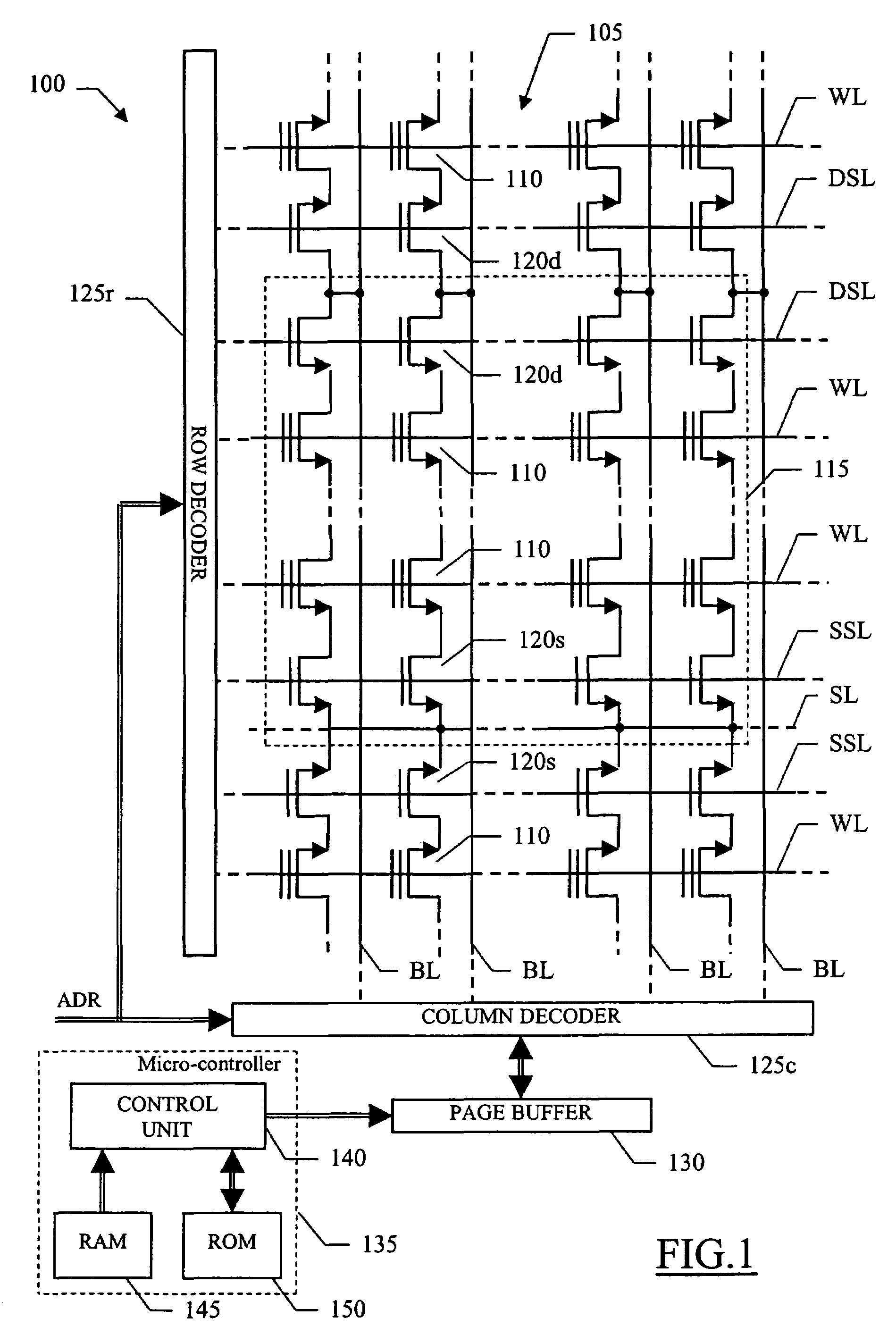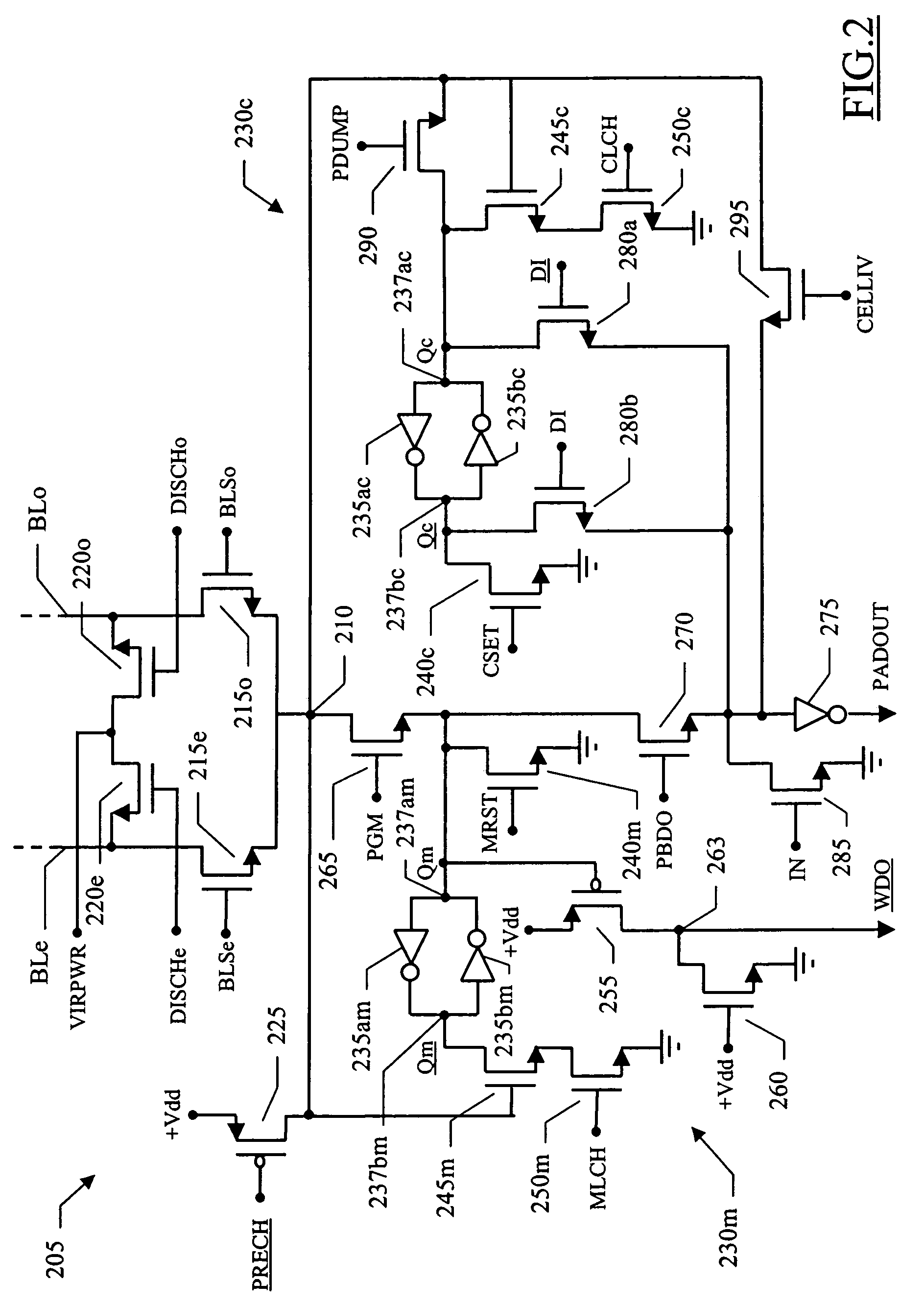Sequential program-verify method with result buffering
a program verification and result technology, applied in the field of nonvolatile memory, can solve the problems of deleterious effect on the performance of the suspension of the sequence program verification procedure, and the overall cost so as to improve the production process of the memory device, reduce the overall cost, and reduce the length of the procedure
- Summary
- Abstract
- Description
- Claims
- Application Information
AI Technical Summary
Benefits of technology
Problems solved by technology
Method used
Image
Examples
Embodiment Construction
[0015]With reference in particular to FIG. 1, a non-volatile memory device 100 (consisting of an E2PROM of the flash type) is illustrated. The flash memory 100 is integrated in a chip of semiconductor material, and includes a matrix 105 (or more) of memory cells 110; typically, each cell 110 consists of a floating gate NMOS transistor. In an erased condition, the cell 110 has a low threshold value (associated with a logic value 1). The cell 110 is programmed by injecting electric charges into its floating gate; in this condition, the cell 110 has a high threshold value (associated with a logic value 0). Therefore, when a selected cell 110 is biased for reading, the cell 110 will be conductive if erased or non-conductive if programmed.
[0016]The cells 110 are organized into a plurality of rows (for example, 2048) and a plurality of columns (for example, 4096). The flash memory 100 has a so-called NAND architecture. In this configuration, the matrix 105 is partitioned into multiple sec...
PUM
 Login to View More
Login to View More Abstract
Description
Claims
Application Information
 Login to View More
Login to View More - R&D
- Intellectual Property
- Life Sciences
- Materials
- Tech Scout
- Unparalleled Data Quality
- Higher Quality Content
- 60% Fewer Hallucinations
Browse by: Latest US Patents, China's latest patents, Technical Efficacy Thesaurus, Application Domain, Technology Topic, Popular Technical Reports.
© 2025 PatSnap. All rights reserved.Legal|Privacy policy|Modern Slavery Act Transparency Statement|Sitemap|About US| Contact US: help@patsnap.com



